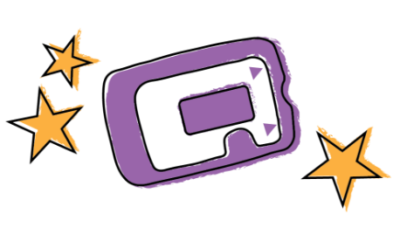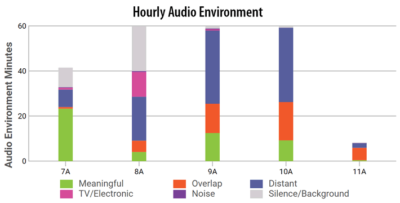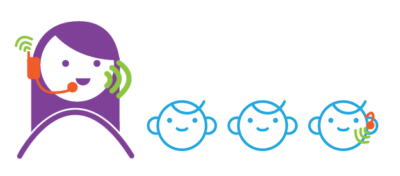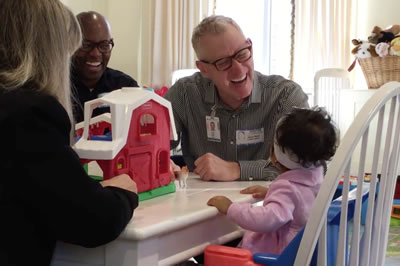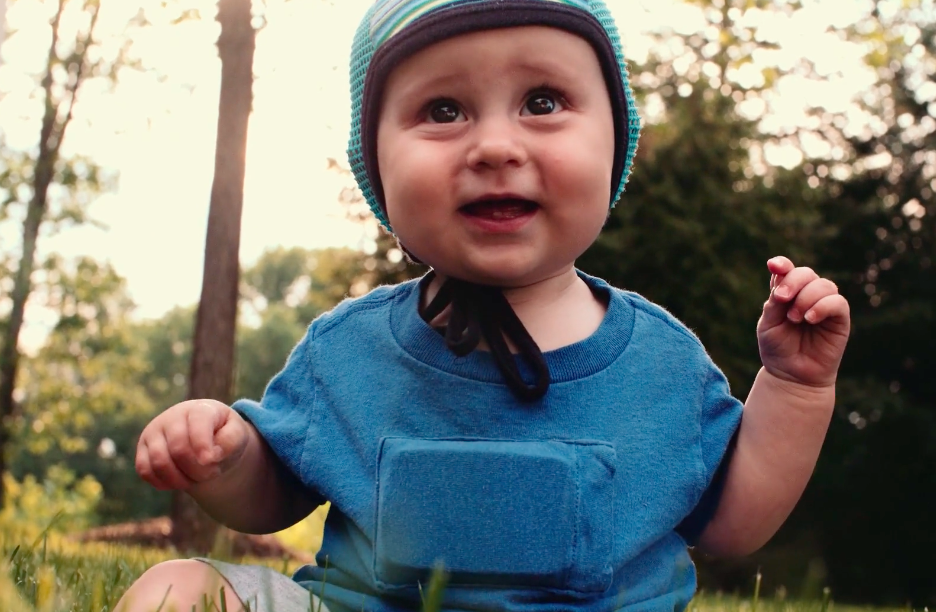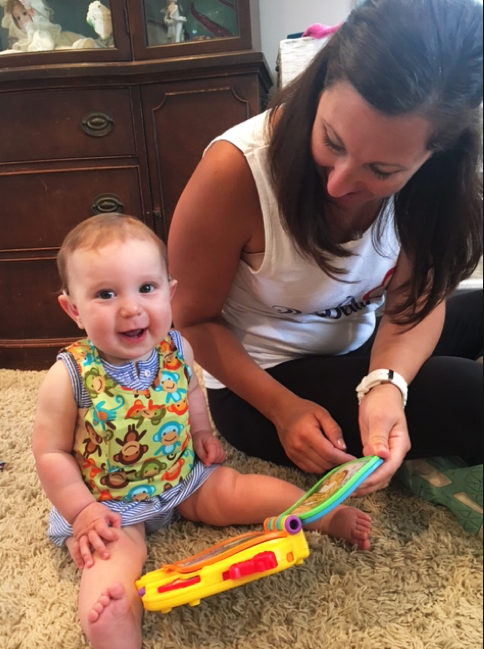Note: This is a guest post written by Lisa Eberlein, a mom to two children who are hard of hearing. She worked with LENA in the past as a consultant and was influential in bringing LENA technology to the D/HH community. This story is adapted from a version originally published in 2010.
My son, Ford, was diagnosed with hearing loss at birth. Like many new parents of children who are deaf or hard of hearing, I was stunned and overwhelmed at first. Gradually, I immersed myself in early interventions and therapies, learning what I needed to know to ensure his access to sound, a rich acoustical environment, and a solid education. Then when Ford was six I had my second child, a girl. My daughter, Stella, was diagnosed with hearing loss as well. I found the news even harder to bear the second time around. Family and friends tried to comfort me by saying, “At least now you know what to expect.” “Exactly!” I cried. “That’s why I’m so upset! I don’t know how I can do it all over again!” Of course, I would.
Early intervention looked pretty much the same back then as it does now. I would be videotaped while interacting with Ford or Stella during half-hour sessions. The taping sessions made me feel like an actor on a stage. I knew my interactions were different from everyday interactions at home. Meanwhile, my children weren’t quite sure what was going on and definitely did not act naturally. Adding to my frustration, I had to wait weeks for the results. I thought, “Isn’t there a way to capture my family’s natural language environment?”
While my children were still quite young, I attended a quarterly meeting for the Children’s Literacy Coalition in Denver. That’s when I discovered LENA (which stands for “Language ENvironment Analysis”). At the event, LENA’s Senior Director of Research and Evaluation, Jill Gilkerson, PhD, presented the system and explained how it worked.
Essentially, a child wears an unobtrusive LENA device in the front pocket of special clothing. With the device, a parent can record up to 16 hours of the child’s natural acoustical environment. LENA software automatically processes the data, generating actionable feedback reports. For example, the reports show data on child vocalizations, adult words, conversational turns, and (notably) the child’s audio environment. The colorful, intuitive bar graph of the audio environment report measures the time and percentage of time that a child is exposed to silence and background sound, noise, TV and electronic sounds, overlapping sounds, and distant and meaningful speech.
The presentation blew me away. I couldn’t believe that the technology actually existed or that it hadn’t been created just for kids with hearing loss. Immediately following the presentation, I asked extensive questions about the technology and explained my perspective as a parent of two children who are hard of hearing.
They invited me to Boulder to share my perspective with others at LENA. As hearing loss is a low-incidence disability, I was afraid that they wouldn’t market to the DHH community; therefore, I eventually accepted an offer to join LENA as a consultant.
Suddenly I found myself overwhelmed again. Not only was I learning about LENA technology and traveling in my new role as a consultant, but Ford was starting middle school, and Stella was entering school for the first time.
In the classroom, Ford had used and benefited greatly from an FM system, and I felt Stella might, too. However, Stella’s teacher suggested that her classroom simply be outfitted with a sound field system. Super busy and convinced that I was projecting Ford’s problems onto Stella, I decided not to push for an FM system.
Regardless, the more familiar I became with LENA and its ability to distinguish distant speech from near and clear speech, the more I was determined to use it to test the quality of the acoustical environment enabled by the sound field system. So, one morning, I dressed Stella in her LENA clothes, turned on the device and put it into the special pocket on her chest. I dropped her off at school and told Stella’s teacher what I was doing. “No problem,” she said.
The LENA results were illuminating. The hourly Audio Environment report below showed a considerable discrepancy between the quality of speech Stella had been exposed to at home and at school. From 7 a.m. to 8 a.m., when Stella was at home, LENA estimated that the acoustical environment consisted of 54 percent near and clear “meaningful” speech and a combined 21 percent distant and overlapping speech.
The hour of 8 a.m. to 9 a.m. represents Stella’s trip from home to school.The portion of the hourly chart from 10 a.m. to 11 a.m. at the school illustrates that Stella was exposed to much more distant and overlapping speech — a whopping 83 percent! — with only 15 percent coming from the meaningful speech category.
Exporting the data at the five-minute resolution showed how meaningful speech was such a small part of the classroom environment. For example, 11-11:05 a.m., which was the start of my daughter’s lunchtime, featured nearly zero meaningful speech. My children had become accustomed to turning off their hearing aids during lunch to block out the loud dissonance in the lunchroom.
The graphs and data captured my concerns clearly, so I decided to take them to my daughter’s Individualized Education Program (IEP) meeting to support my request for an FM system for Stella. The IEP team was really impressed, oohing and aahing over the reports. When they saw the distinction between the amount of meaningful speech and distant speech in the Audio Environment report, the need for an FM system seemed obvious. We all concluded that the sound field system had just made the teacher’s voice louder, but her voice was still distant and often drowned out by other auditory input in the room. I had suspected it, but LENA proved it. LENA provided the IEP team with independent, objective information and helped my daughter get the FM system she desperately needed. And that made all the difference.
Click here to download a printable version of this story!

